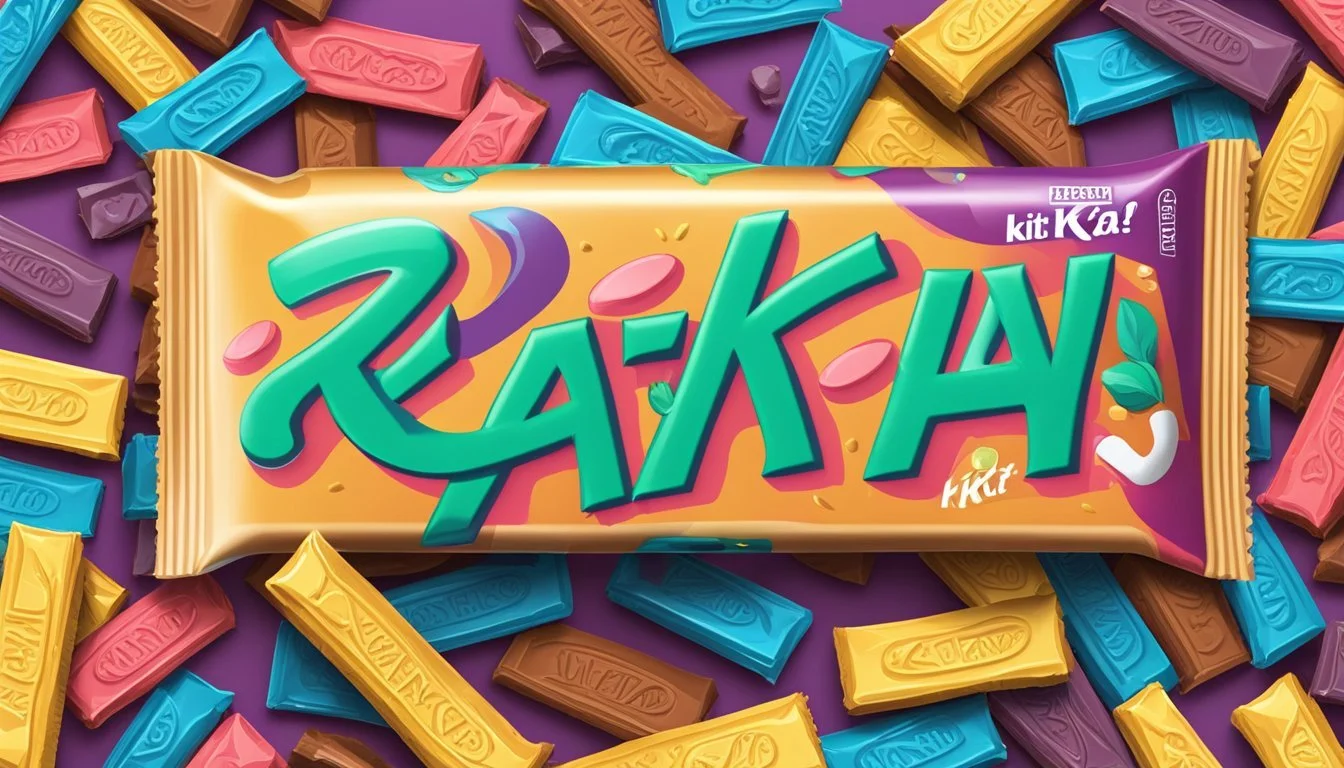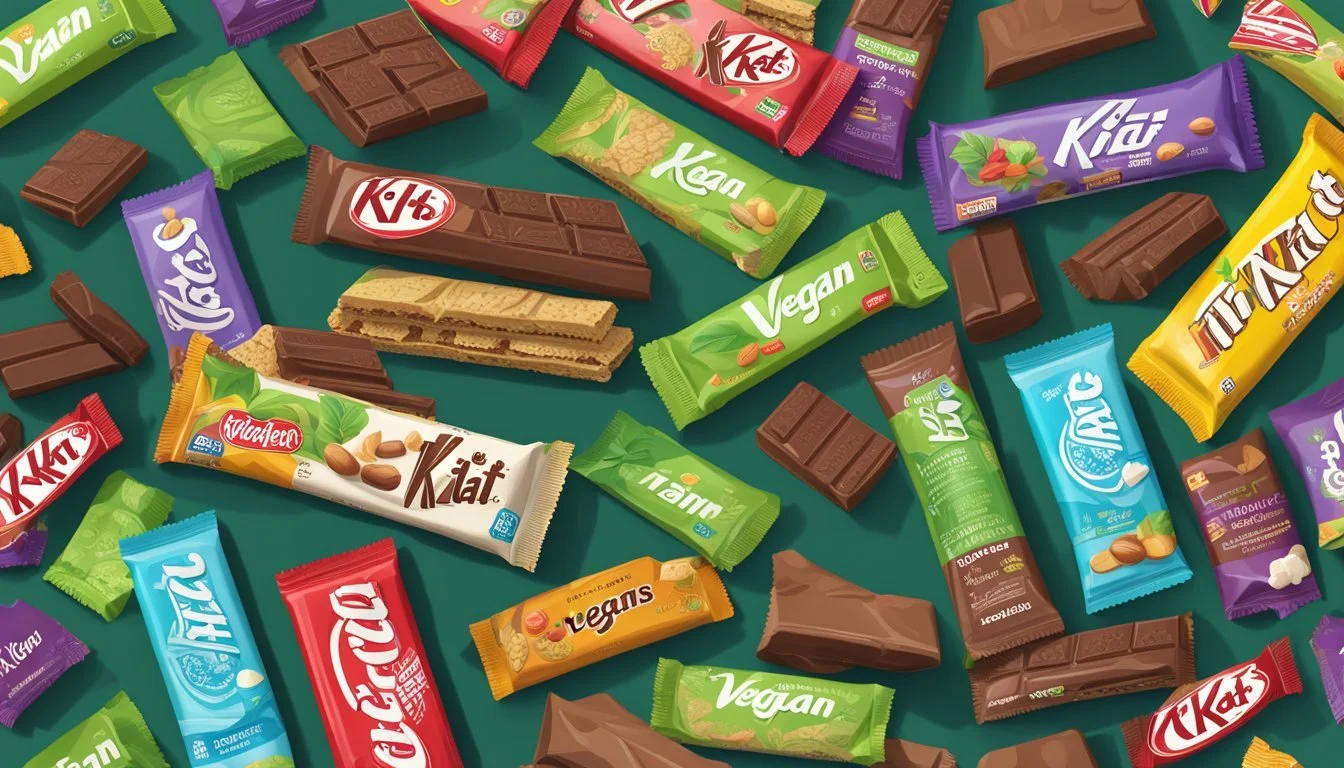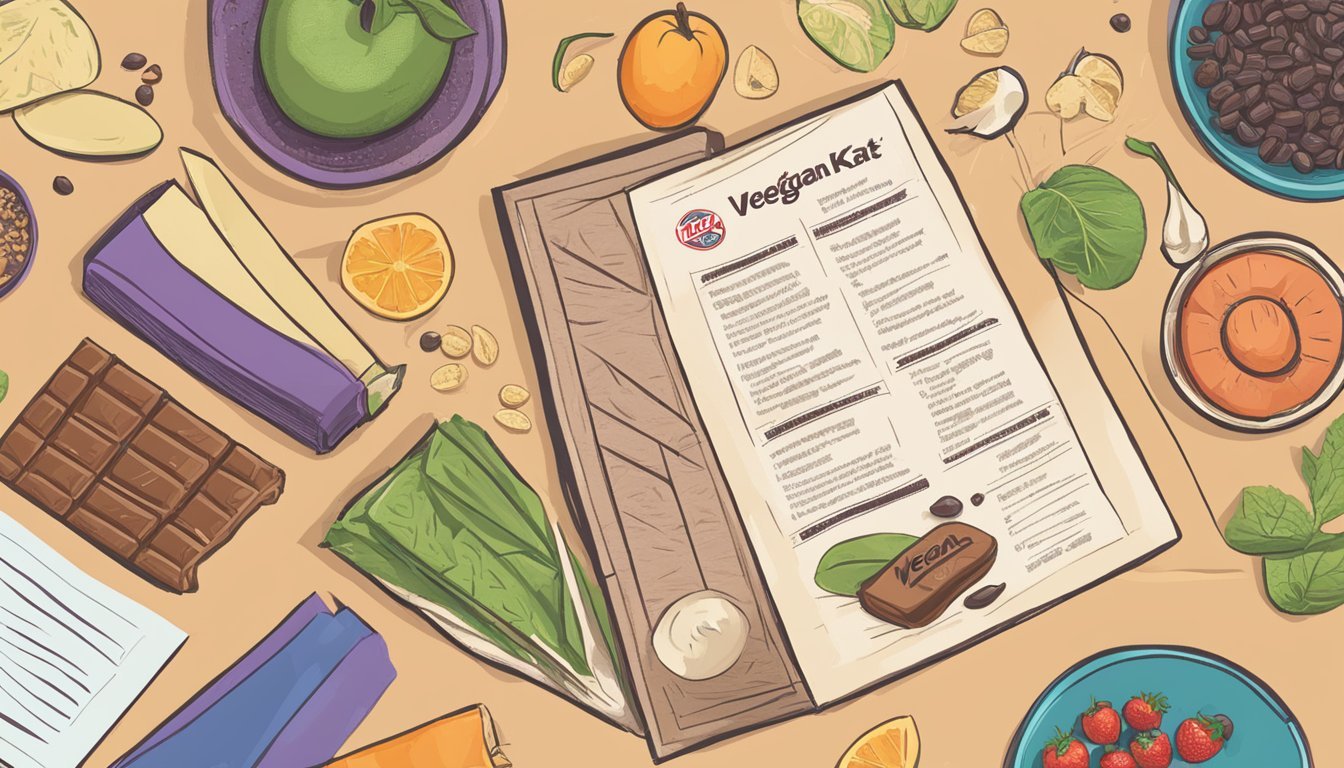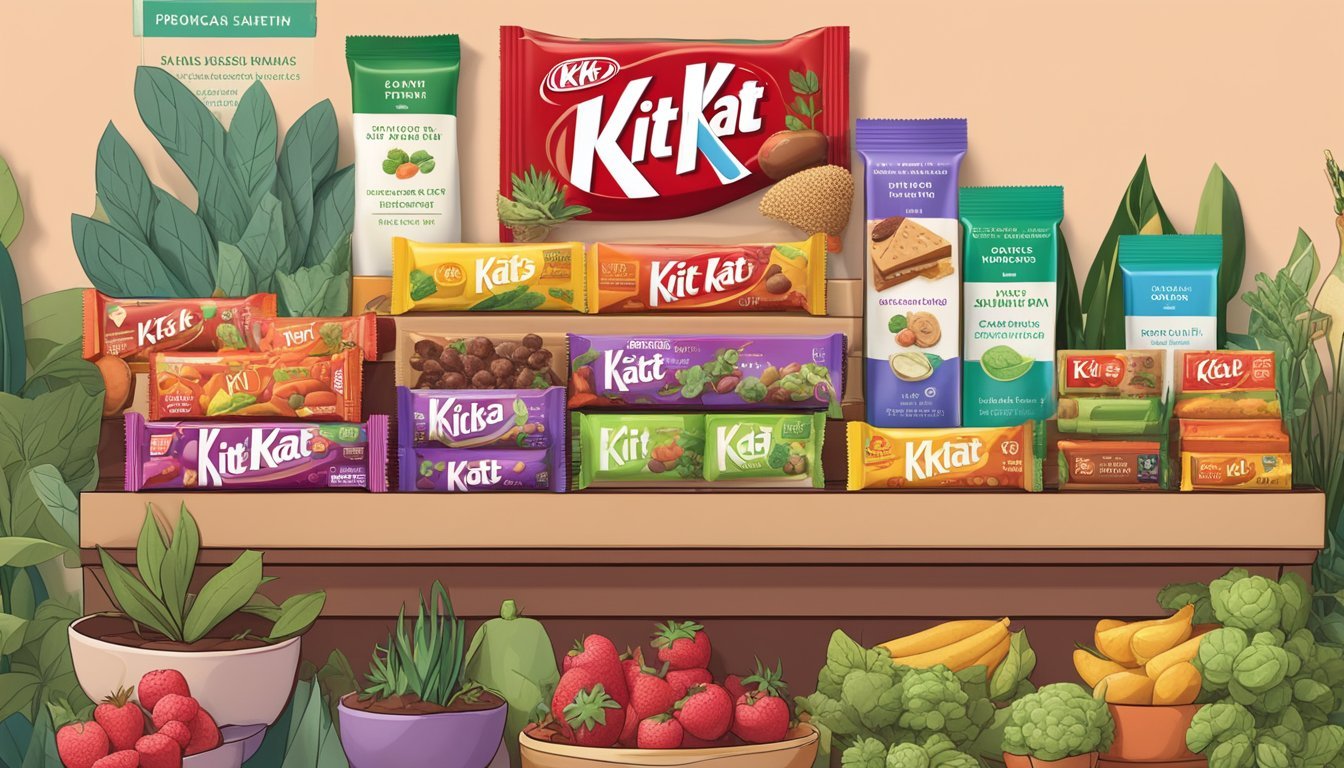Are Kit Kats Vegan?
Unwrapping the Ingredients List
Kit Kats, the popular chocolate-covered wafer bars, have traditionally contained dairy products in their composition, which means that they are not vegan-friendly. This is mainly due to the presence of milk in the milk chocolate coating that is signature to the classic Kit Kat bars. However, recent consumer demand for plant-based alternatives has led companies, including Nestlé, the maker of Kit Kat, to develop vegan versions of their well-known confectionery items.
In response to this demand, Nestlé released a vegan version of the Kit Kat, known as KitKat V, which has been carefully formulated to exclude animal products. The launch began in select countries and has been gradually expanding to additional markets. The creation of KitKat V involves substituting the conventional dairy ingredients with plant-based alternatives. While maintaining the familiar taste of the original, these changes reduce the carbon footprint of the chocolate bar, appealing to environmentally conscious consumers as well as those following vegan diets.
Understanding Veganism
In analyzing whether a product is aligned with vegan principles, it is crucial to unpack the tenets of veganism and to identify common non-vegan ingredients that may not be immediately recognized.
Vegan Diet Essentials
The vegan diet is characterized by the exclusion of all animal products. Individuals who follow a vegan lifestyle commit to consuming only plant-based foods. Such a diet includes a variety of fruits, vegetables, grains, legumes, nuts, and seeds. The intent is to avoid any products derived from animals, which aligns with ethical, environmental, or health-driven motives.
Key Components of a Vegan Diet:
Fruits and Vegetables: A diverse range, including leafy greens and root vegetables
Grains: Such as rice, wheat, barley, and oats
Legumes: Including beans, lentils, chickpeas, and peas
Nuts and Seeds: Like almonds, flaxseeds, and chia seeds
Plant-Based Milks and Dairy Alternatives: Almond milk, soy milk, and coconut yogurt
Common Non-Vegan Ingredients
Vegans must be vigilant about ingredients that are derived from animals but may not be obvious at a glance. This scrutiny ensures the vegan status of their diet. Common non-vegan ingredients include dairy products like milk, cheese, and butter. Moreover, ingredients such as gelatin (derived from animal bones), honey (produced by bees), and certain forms of refined sugar (processed using bone char from animals) also do not conform to a plant-based diet.
Examples of Non-Vegan Ingredients:
Dairy: Milk, cheese, butter, and whey
Eggs: Used in many baked goods and pastas
Gelatin: Found in gummy candies and some yogurts
Honey: Often used as a natural sweetener
Refined Sugar: Some varieties are processed with animal bone char
Through understanding these fundamentals, consumers can make informed decisions regarding their diet and the products they choose to support their vegan lifestyle.
Kit Kat Composition
In exploring the composition of Kit Kats, it's vital to distinguish between the conventional and vegan varieties. This analysis will focus on the ingredients and nutritional content, specifically concerning their suitability for vegan consumers.
Ingredients of Kit Kats
The conventional Kit Kat bars contain several key ingredients:
Sugar: Necessary for the sweet taste.
Wheat Flour: Used in creating the wafer base.
Milk Chocolate: Combines milk powder, cocoa butter, vegetable fats, and lecithin as an emulsifier.
Milk: Present as part of the milk chocolate.
Soy Lecithin: Acts as an emulsifier.
Cocoa Mass and Cocoa Butter: Found within the chocolate coating.
Yeast: Used in the wafer dough.
Salt: Adds to the flavour profile.
The introduction of the vegan variety, often marked as "KitKat V," signifies a shift towards plant-based alternatives. Key dairy ingredients are replaced with vegan substitutes, while maintaining the iconic taste by adjusting the cocoa content.
Nutritional Content
Kit Kats, like many chocolate confectioneries, are high in calories, with a focus on carbohydrates and fats:
Calories: Primarily come from sugars and fats present in milk chocolate and added vegetable fats.
Carbohydrates: Largely contributed by sugar and wheat flour.
Fats: Derived from cocoa butter, milk powder, and any additional vegetable fats included in the chocolate.
Protein: Present in smaller amounts, sourced mainly from milk ingredients.
The nutritional content of the vegan Kit Kat would differ slightly due to the absence of milk products, affecting the fat and protein ratios. Sugar content generally remains high, while wheat-based ingredients ensure the presence of carbohydrates.
Dietary Considerations
When assessing whether Kit Kats align with certain dietary restrictions, it is paramount to understand the specific ingredients used.
Vegan Concerns with Kit Kats
For vegans, the primary concern is the inclusion of animal-derived products within Kit Kats. Vegans abstain from all forms of animal exploitation and cruelty, which extends to not consuming or using animal products in their diet. Unfortunately, Kit Kats contain several non-vegan ingredients that make them unsuitable for a vegan diet.
Non-Vegan Ingredients Highlight
The non-vegan ingredients found in Kit Kats include:
Dairy: A primary component of the milk chocolate in Kit Kats.
Lactose: A type of sugar present in milk products.
Butterfat: A fatty constituent of milk used in chocolate production.
Proteins from Whey: Derived from milk and used for their textural properties in confections.
Here's a breakdown of how these ingredients conflict with a vegan diet:
Ingredient Reason Non-Vegan Dairy Comes from cows, involves animal exploitation. Lactose A milk sugar, not suitable for vegans or lactose intolerant. Butterfat Extracted from milk, an animal product. Proteins from Whey Sourced from milk during cheese production.
Kit Kats, therefore, are not vegan due to their reliance on dairy products and other milk derivatives for flavor, texture, and structure of the chocolate treat.
Vegan Alternatives to Kit Kats
While Kit Kats typically contain dairy products and are not vegan, there are plant-based alternatives available that do not compromise on taste. Consumers can choose from commercially produced vegan chocolate bars and also explore making their own vegan-friendly versions at home.
Plant-Based Chocolate Options
For those seeking commercially available vegan Kit Kat alternatives, certain brands have responded to demand by creating plant-based chocolate bars. These alternatives employ a variety of dairy-free ingredients such as rice, oat, and pea milk alternatives to replicate the familiar creamy texture. It's important to look for products that mention sustainable cocoa and other vegan-friendly certifications.
Vegan chocolate bars: A new era for plant-based indulgence with vegan KitKats now available in some regions, offering a similar taste profile using plant-based ingredients.
Rice-based alternatives: Rice milk chocolate provides a texturally similar experience to traditional milk chocolate, adhering to both dairy-free and vegan diets.
Diverse dairy alternatives: Broadening the horizon, oat and pea milk alternatives are also utilized in crafting dairy-free chocolate, expanding the variety of vegan confections.
Homemade Vegan Kit Kat Recipes
For the creative types, homemade recipes offer a personalized touch to the classic candy bar. These recipes typically involve a few key components:
Vegan-friendly wafers: Essential for the characteristic Kit Kat crunch.
Plant-based chocolate: Melted dairy-free chocolate is used for coating the wafers.
Crafted using plant-based ingredients, these homemade treats can be as simple or as complex as desired, often involving layering and proper setting time to achieve the desired snap.
Production and Manufacturing
KitKat's production and manufacturing processes are pivotal in determining whether the confectionery product is suitable for vegans. Nestlé's development of KitKat V exemplifies the company's responsiveness to the plant-based market.
Kit Kat's Manufacturing Process
Nestlé, one of the world's largest food and beverage companies, has established various production facilities responsible for the manufacturing of KitKat. The conventional chocolate-covered wafer bars have been produced in facilities that are not dedicated to vegan products, which raises concerns of cross-contamination with non-vegan ingredients.
The specific manufacturing process for the vegan KitKat, known as KitKat V, began in the United Kingdom at Nestlé's Confectionery Product Technology Center. This facility places a significant emphasis on ensuring the vegan integrity of the product. Ingredients like sustainably sourced cocoa from the Rainforest Alliance and a rice-based alternative to milk are used to replicate the classic taste of a traditional KitKat bar. A plant-derived emulsifier, PGPR, is utilized instead of animal fats, ensuring a vegan-friendly recipe.
Global Variations
Initially launched in the United Kingdom, the vegan-friendly confectionary quickly expanded to other regions. Eastern European countries, including Poland, Estonia, Latvia, and Lithuania, were among the first markets outside the UK to enjoy the new KitKat V. Nestlé then set its sights even further, announcing plans to extend distribution to countries like Australia and Brazil.
Under the stewardship of Louise Barrett, head of the Nestlé Confectionery Product Technology Center in York, KitKat V's production expanded, reflecting Nestlé's growing investment in plant-based alternatives. Each facility adapting the production of KitKat V must adhere to strict vegan standards to minimize the risk of cross-contamination with dairy or other animal-derived ingredients. The inclusive production process aims to ensure that KitKat remains a confectionery favorite, now available even to those adhering to a vegan diet.
Environmental and Ethical Considerations
When examining the environmental and ethical considerations of Kit Kats, one must focus on the sustainability of the practices adopted in their production and the ethics surrounding the sourcing of key ingredients.
Sustainable Practices
Kit Kat manufacturers aim to address environmental concerns by incorporating sustainable practices into their production process. This includes efforts to reduce the carbon footprint of manufacturing facilities and transportation. An integral part of these sustainable practices involves the use of sustainable cocoa. Certification programs like the Rainforest Alliance are leveraged to ensure that cocoa production doesn't contribute to deforestation or the degradation of the environment.
Carbon Footprint Efforts:
Reduction in greenhouse gas emissions across production and distribution.
Implementation of renewable energy sources in factories.
Sustainable Cocoa Initiatives:
Sourcing from farms with Rainforest Alliance certification.
Investment in programs that promote sustainable farming practices.
Ethical Sourcing
The ethical sourcing of ingredients like cocoa, palm oil, and palm kernel oil is a significant point of focus. The company strives to procure these ingredients from sources that do not exploit labor or cause harm to wildlife through habitat destruction. Ethical sourcing aims to mitigate the problems associated with these ingredients, such as the impact of palm oil production on tropical rainforests and the associated loss of biodiversity.
Cocoa:
Ensuring fair labor practices and fair compensation for cocoa farmers.
Engagement with initiatives aiming to eradicate child labor in cocoa farming.
Palm Oil and Palm Kernel Oil:
Commitment to using palm oil that is certifiably sustainable and not linked to deforestation.
Engagement with suppliers to adhere to the No Deforestation, No Peat, No Exploitation (NDPE) policies.
Consumer Perspectives
In assessing the vegan variety of Kit Kats, consumer feedback predominantly revolves around taste and texture, as well as the influence of social media on their purchasing decisions.
Taste and Texture Feedback
Consumers generally expect the vegan Kit Kat to mirror the classic version's satisfying crunch and smooth chocolate coating. Feedback indicates that maintaining the iconic crispy wafer experience is crucial for a successful transition to a vegan option. Taste-wise, opinions vary, but a sweet tooth satisfaction similar to the original is often cited as the benchmark for acceptance.
Positive Feedback: Some consumers appreciate the attempt at replicating the original flavor while using plant-based ingredients.
Negative Feedback: Others feel the difference in taste is noticeable and falls short of the non-vegan counterpart.
Social Media Influence
Social media plays a significant role in shaping consumer opinions and decisions about vegan Kit Kats. Influencers and community discussions often highlight the:
Novelty: The launch of a vegan Kit Kat generates buzz especially when endorsed by prominent figures.
Availability: Posts about where to find the new vegan options help drive consumer interest and trial.
Posts and Reviews are pivotal, as they can either amplify enthusiasm or deter potential customers based on shared personal experiences.
Legal and Brand Information
In the confectionery industry, licensing and trademark regulations play a crucial role in product distribution and brand management, particularly for internationally recognized products such as Kit Kats.
Nestlé and Hershey Licensing
Nestlé, a multinational food and beverage company, originally developed the Kit Kat brand. Nestlé operates in the United Kingdom and globally, managing the Kit Kat brand through strategic licensing agreements, which include production and distribution controls. This responsibility often involves collaboration with facilities such as the Confectionery Research and Development Center to ensure quality and innovation.
In the United States, The Hershey Company holds the license to produce Kit Kat. Through this agreement, Hershey is vested with the rights to manufacture and sell Kit Kats in the U.S., adhering to the quality and branding standards established by Nestlé.
Trademark Regulations
The Kit Kat brand is safeguarded by trademark laws in various jurisdictions, requiring any use of the name or associated branding to comply with these legal frameworks.
Country/Entity Trademark Holder United Kingdom Nestlé United States The Hershey Company
Both Nestlé and Hershey are bound by international and regional trademark regulations to protect the integrity of the Kit Kat brand. These regulations prohibit unauthorized use of the Kit Kat trademark, ensuring consumers receive the genuine product associated with the esteemed name across different regions, be it the UK or the USA.
Kit Kat Marketing Strategies
In addressing the vegan market, Nestlé has strategically positioned the plant-based Kit Kat V through targeted marketing and branding efforts. These strategies have been designed to not only align with the company's sustainability goals but also to meet the growing consumer demand for vegan options.
Advertising Techniques
Nestlé applies a mix of traditional and digital advertising techniques to promote the vegan Kit Kat. They utilize social media campaigns to reach a broader audience, especially focusing on platforms where vegan communities are prevalent. Another significant technique is collaboration with influencers in the plant-based lifestyle segment, which helps authenticate the product's appeal to potential consumers. In-store promotions and packaging that highlight the Rainforest Alliance certification also play a role in reassuring customers of the ethical sourcing of ingredients.
Target Demographics
The primary target demographics for the vegan Kit Kat are:
Vegans and vegetarians: Individuals who avoid animal products for ethical, health, or environmental reasons.
Flexitarians: Consumers who are reducing their meat and dairy consumption, but are not exclusively vegan or vegetarian.
Eco-conscious consumers: Shoppers who prioritize sustainability and environmentally friendly products in their purchasing decisions.
Nestlé ensures that the branding of Kit Kat V resonates with these groups by emphasizing the product’s vegan qualities and sustainability credentials. They have tailored their marketing content to address the specific preferences and values of these demographics.










